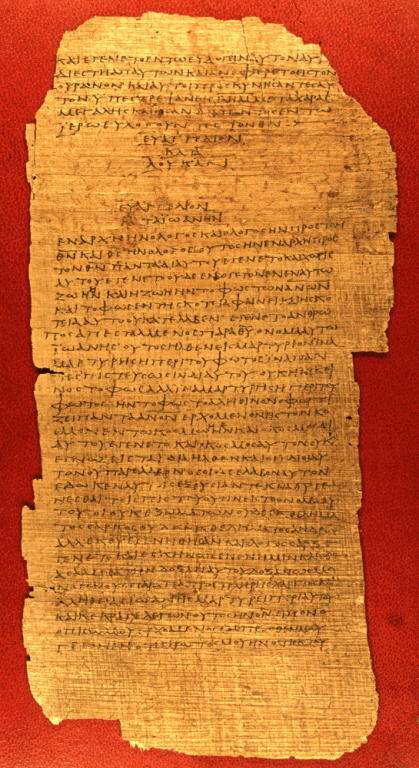Behold a piece of papyrus dating, conservatively to about 175 A.D. (based on epigraphy etc). It includes the very ending of the Gospel of Luke (notice as well the reference to what precedes being by Luke towards the middle of the document. This is the way a syllabus also worked— a toe tag that originally would be added to the scroll at its end to identify its contents or author or both). Now notice that what follows the identifier is the beginning of the Gospel of John with the identifier up front and then the familiar opening words ‘en arche ho logos’… in the beginning was the word. What this one sheet attests to is a time in the second century when Gospels were being collected together and put into a single document, whether a large scroll, or a codex or page format.
Now the importance of this can hardly be exaggerated. What this means is these documents already existed independently probably well before 175 A.D. and were being combined in the second century into a single corpus of sacred writings, with Luke just as important as John and vice versa. If you can read the Greek of the ending of Luke, you will notice it ends appropriately with the end of Luke 24. The notion that that chapter, or for that matter other whole chapters of Luke (say Lk. 1-2) were added in the second century is not merely an argument from silence. It’s argument against what evidence we have. Marcion and his editing of Luke and Paul is no good guide to the original form of Luke’s Gospel. Actual papyri with Luke’s Gospel on them is a good guide, like this one. The standard scholarly position on the four Gospels is that they were written in the last third of the first century A.D. and apart from textually dubious additions like those in the Western text, or for instance the long ending of Mark (Mk. 16.9ff.) what we have today is pretty much what the authors original wrote, with some variants here and there that don’t affect the overall evidence and conclusion.
Another interesting thing to note about this papyrus is that it attests that Luke’s Gospel was separated from his second volume, and placed before John’s volume in the collection of canonical Gospels. This set Acts somewhat adrift, all by itself, which may explain the many more variants in the Western text of Acts as opposed to the Gospel. It was not as carefully copied and preserved.












